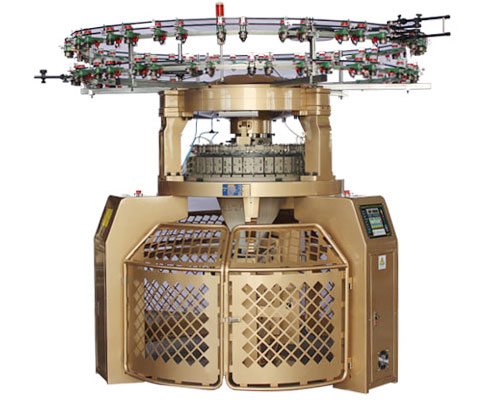Knitted fabrics can be divided into single-sided knitted fabrics and double-sided knitted fabrics. Single jersey: A fabric knitted with a single needle bed. Double jersey: A fabric knitted with a double needle bed. The single and double sides of the knitted fabric depend on the weaving method.
1. Weft plain needle organization
The weft plain stitch structure is formed by successively stringing the same unit coils in one direction. The two sides of the weft plain stitch structure have different geometric shapes. The loop column on the front stitch and the stitch wale are arranged at a certain angle. The knots and neps on the yarn are easily blocked by the old stitches and stay on the reverse side of the knitted fabric. , so the front is generally smoother and smoother. The circle arc on the reverse side is arranged in the same direction as the coil row, which has a large diffuse reflection effect on the light, so it is relatively dark.
The weft plain knitted fabric has a smooth surface, clear lines, fine texture and smooth hand feel. It has good extensibility in transverse and longitudinal stretching, and the transverse extensibility is greater than that in the longitudinal direction. Moisture absorption and air permeability are good, but there are detachability and curling properties, and sometimes the coil is skewed. Commonly used in the production of underwear, T-shirt fabrics and so on.
2. Rib weave
The rib structure is made up of the front stitch wale and the reverse stitch wale arranged alternately with a certain combination rule. The front and back stitches of the rib structure are not on the same plane, and the stitches on each side are adjacent to each other. There are many types of rib structures, which vary depending on the number of wales on the front and back. Usually, numbers are used to represent the combination of the number of wales on the front and back, such as 1+1 rib, 2+2 rib or 5+3 rib, etc., which can form different appearance styles and styles. Performance ribbed fabric.
The rib structure has good elasticity and extensibility in both longitudinal and transverse directions, and the transverse extensibility is greater than that in the longitudinal direction. Rib weave can only be released in the opposite direction of weaving. In the rib structure with the same number of wales on the front and back, such as 1+1 rib, the curling force does not appear because the forces that cause curling are balanced with each other. It is commonly used in the production of close-fitting elastic underwear, casual clothing, swimwear and pants fabrics, as well as elastic parts such as necklines, trousers, and cuffs.

Post time: May-10-2022
